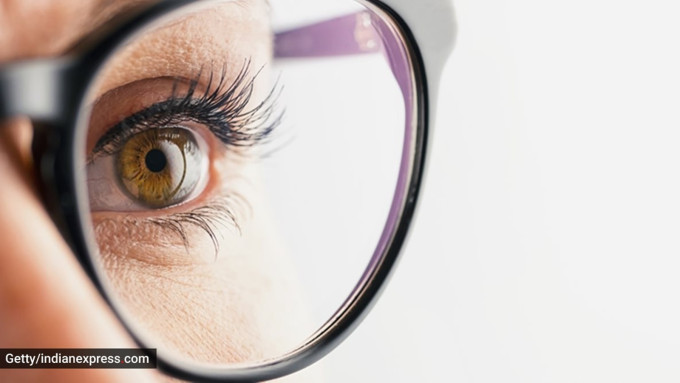All about pilocarpine, the compound used in DCGI-approved eye drops that promise to replace reading glasses
To manage presbyopia, an age-related eye condition that makes it difficult to see things up close, an eye drop has been launched — which also promises to replace reading glasses in those over 40. The PresVu eye drops, which have received a “final approval” from the Drug Controller General of India (DCGI), utilise “advanced dynamic buffer technology to swiftly adapt to tear pH, ensuring consistent efficacy and safety for extended use, keeping in mind that such drops will be used for years at a stretch”, according to a press statement.
The drug contains 1.25 percent pilocarpine hydrochloride, a compound that has been used to treat various eye conditions and reduce eye pressure for decades. Dr Dhananjay Bakhle, consultant pharmacologist and scientific adviser, Entod Pharmaceuticals, clarified that the drops contain “synthetic pilocarpine and not plant extract containing pilocarpine”.

“It was only in 1874, when Pilocarpine was first discovered, that it was extracted from plants. Subsequently, once the pharma industry developed, it has always been synthesised in chemical labs and used for glaucoma. Our product is repurposed pilocarpine for presbyopia in a different strength from the one used for glaucoma, and a much lesser dose than that,” Dr Bakhle told indianexpress.com.
According to the data from phase 3 clinical trials of the drug in 250 patients across 10 sites, the “drug works best in people aged 40 to 55 years with mild-to-intermediate presbyopia”, which temporarily helps correct vision problems. “The eye drop must be used only under prescription by an ophthalmologist. One drop of the drug should be put in each eye every day. The effect lasts about six hours,” the statement added.
 You won’t need those reading glasses anymore? (Source: Getty Images/Thinkstock)
You won’t need those reading glasses anymore? (Source: Getty Images/Thinkstock)
Taking a cue, we decided to explore more about the specific compound and how its usage impacts eye health, especially for the ageing population.
Dr Maansi Sethi, eye surgeon, consultant ophthalmology, Ujala Cygnus Group of Hospitals said pilocarpine is a lactone alkaloid used in ophthalmology to reduce intraocular pressure and manage various eye conditions.
“It is commonly employed to treat angle-closure glaucoma and ocular hypertension, as well as to constrict the pupil after cataract surgery,” Dr Sethi told indianexpress.com.
According to Dr Sethi, pilocarpine works by activating cholinergic receptors of the eye. “In 2021, the US FDA approved pilocarpine hydrochloride eye drops for the treatment of presbyopia, an age-related condition that affects near vision. By constricting the pupils, pilocarpine increases the depth of field, improving near vision,” she said.
What to consider?
While effective, Dr Sethi noted that regular use of pilocarpine eye drops can cause side effects such as eye irritation, increased tearing, headaches, and blurry vision in some people. “Therefore, it is not recommended for everyone,” she stated.
*DISCLAIMER: This article is based on information from the public domain and/or the experts we spoke to. Always consult your health practitioner before starting any routine.*
📣 For more lifestyle news, click here to join our WhatsApp Channel and also follow us on Instagram
Disclaimer: The copyright of this article belongs to the original author. Reposting this article is solely for the purpose of information dissemination and does not constitute any investment advice. If there is any infringement, please contact us immediately. We will make corrections or deletions as necessary. Thank you.
